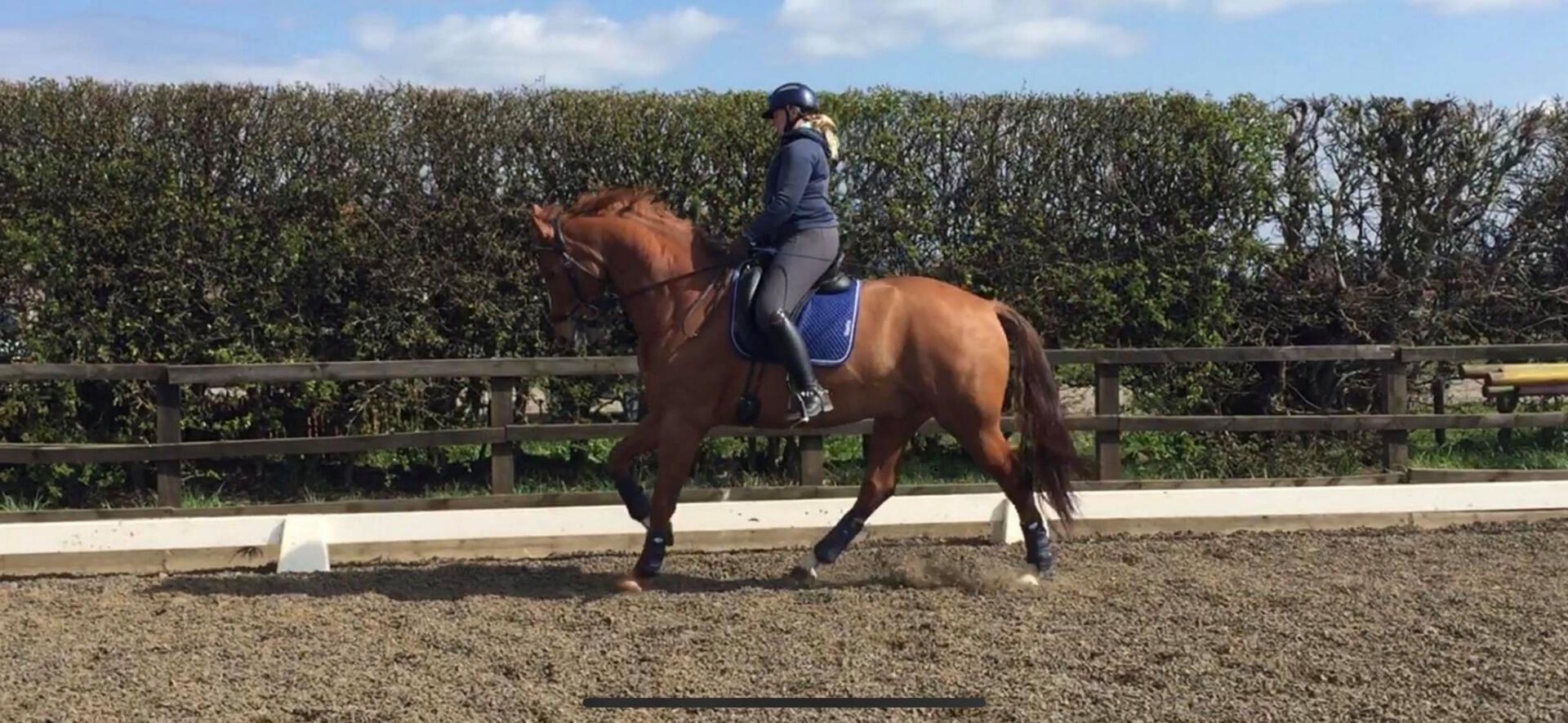
Masta testing partner, professional dressage rider and trainer Melissa Chapman from Team Chapman Dressage has compiled 5 great exercises for young dressage horses, we hope you find them useful and we’d love to hear how you get on trying them out:
1. Trot - walk - trot transitions: I like to do these transitions in corners for many reasons, they’re good for encouraging young horses to go in to the corners and using the school. They also help make transitions sharper if you have a specific amount of time to make the transition down and back up to trot.
2.50 pence shape circle: this is a great exercise to help develop the turning aid of the outside rein and leg, I often use this to teach the horses that even when riding a circle, make sure the outside shoulder doesn’t fall out! You try to ride one or 2 turning strides and then 3/4 straight before turning it again. So in theory your circle has 8 sides.
3. Altering the pace of the trot or canter at every letter: this exercise is ideal for teaching young horses adjustability within the paces. We change the pace of the trot or canter as every letter around the school, so bringing the pace back and then riding it forwards, trying to keep the balance of the horse and the connection to the contact.

4. Leg yield on the circle: this exercise is an introduction for the horse to leg yield, we start by winding a 20metre circle down to a smaller one in the middle of the big one, about 10 metres, after establishing the balance on that circle you gradually leg yield the horse outwards to the bigger circle, thinking about controlling the outside shoulder. When we feel that this is easy and the horse has an understanding of it we move it on to the 3/4 line going large around the school.
5. Simple changes: we normally start simple changes on a big circle going from canter to walk and back up to canter, initially it’s about being able to collect the canter enough to imagine being able to ride a halt transition, once we have established this canter then we start to introduce the walk transition, I often think of wanting to come to halt and then allowing the walk transition once the horse has learnt to sit in to the downward transition. We also use these when going large in counter canter, I find it really helps to get the horse to sit and stay straight.
